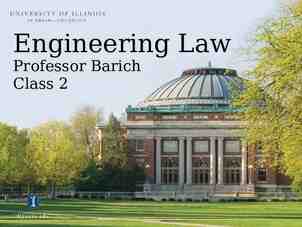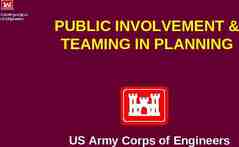Theories of Practice: The Human Resources Frame MPA 8002 The Structure
81 Slides698.00 KB
Theories of Practice: The Human Resources Frame MPA 8002 The Structure and Theory of Human Organization Richard M. Jacobs, OSA, Ph.D.
A HUMAN RESOURCES SCENARIO People are the heart of any organization. When people feel the organization is responsive to their needs and supportive of their goals, managers and leaders can count on their followers’ commitment and loyalty. Managers and leaders who are authoritarian or insensitive, who don’t communicate effectively, or who simply don’t care about their people can never be effective managers and leaders. The human resource manager and leader works on behalf of both the organization and its people, seeking to serve the best interests of both.
MANAGEMENT AND LEADERSHIP IN A HUMAN RESOURCES SCENARIO The job of the manager and leader is one of support and empowerment. Support takes a variety of forms: letting people know that they are important and that managers and leaders are concerned about them; listening to find out about their followers’ aspirations and goals; and, communicating personal warmth and openness. Human resource managers and leaders empower their followers through participation and openness as well as by making sure that they have the autonomy and the resources they need to do their jobs well. Human resource managers and leaders emphasize honest, two-way communication as a way to identify issues and resolve differences. They are willing to confront others when it is appropriate, but they try to do so in a spirit of openness and caring. Bolman & Deal (1991, p. 359)
the human resources frame Primary Metaphor for Organization: Family Tribe Clan Central Concepts: Relationships Self-Interest Needs Feelings Skills Managerial And Leadership Image: Fundamental Challenge: Empowerment Liberation Fulfillment SelfActualization Attune organizational and human needs
If the principles of scientific management were considered “revolutionary,” the assertions of the early human resources theorists were “radical”.
as their hypotheses challenged the antecedents and theories of practice governing how managers viewed workers for the new Industrial era.
One of the earliest precursors of human resources theory. David Owen 18th century mercantilist owned spinning mills throughout Scotland believed that worker productivity could be improved by being attentive to their basic human needs
provided workers a high standard of living, including: decent, clean housing life-long educational opportunities preschool day care progressive elementary and secondary schooling continuing adult education
in contrast to prevailing practice, Owen trained his managers in humane disciplinary practices. .endeavored to make workers “origins” origins rather than “pawns” pawns of the organization (de Charms, 1968)
Contrasting “pawns” and “origins”. how managers and leaders view “pawns”: pawns how managers and leaders view “origins”: origins passive “workers” active “resources” basically incompetent and lazy competent and basically selfmotivated require training bring skills, attitudes, energy, enthusiasm, and commitment are self-regulating need close supervision
how “pawns” pawns experience work: “replaceable cogs” in a machine victims of incompetent bosses, bureaucratic inertia, and organizational doublespeak alienating, dehumanizing, and frustrating how “origins” origins experience work: invigorating opportunities to make a personal contribution a place to experience a sense of belonging, to build self-esteem, and to become self-actualized a place for personal and professional growth and challenge by asserting oneself and advocating one’s needs
The issue raised by the human resources theories of practice is that of better aligning people and organizations not people or organizations.
because. people need organizations for the extrinsic rewards work provides for the intrinsic satisfaction work can provide organizations need people for a reliable and stable labor pool for the energy, effort, and talent people bring
The assumptions of human resources theories. 1. organizations exist to serve human needs 2. organizations and people need each other salaries opportunities careers ideas energy talent 3. the fit of people and organization is critical an inappropriate fit can lead to exploitation or victimization by people and/or the organization
The rise of industrial/organizational psychology in the 20th century, especially human needs theories, provided a theoretical focus to consider the fit of people and organization.
Abraham Maslow (1954). defined 5 4 3 the hierarchy of pre-potent needs 5. self-actualization 4. self-esteem 3. belongingness 2 2. safety, security 1 1. physiological
Chris Argyris (1957). asserted that the worker-structure conflict is built into the traditional principles of organizational design and management task specialization defines jobs as narrowly as possible to improve efficiency .but the outcome is that work is depersonalized and becomes monotonous
evidence of worker-structure conflict: 1. personal withdrawal—evident in absenteeism and quitting 2. psychological withdrawal—evident in indifference passivity, and apathy 3. resistance—evident in soldiering, deception, feather bedding, and sabotage 4. power grabs—climbing the bureaucracy 5. forming coalitions (e.g., unions) to redress power imbalances 6. socializing children with negative view of work (i.e., unrewarding, little hope for advancement)
Frederick Herzberg (1959). formulated a two factor theory of the motivation to work: M 2F A E motivation is a psychological complex of two factors manifesting themselves in attitudes evident in their effects
hygiene factors 2F 2 FACTORS motivators these factors are the objective elements and subjective feelings (i.e., needs or drives activated by the events themselves) antecedent to an attitude
hygiene factors extrinsic do not motivate but the absence of hygiene increases worker dissatisfaction when hygiene is not met, workers strike or give up motivation and become addicted to hygiene
Good organizational hygiene provides the foundation for higher motivation in the workplace. hygiene factors
motivators intrinsic experiences enabling personal growth and self-actualization in the work itself achievement responsibility the work itself advancement doing complete jobs, experiencing success engaging in work design and accountability doing the job engaging in new learnings, developing expertise
.motivators build on hygiene factors. motivators hygiene factors
To inculcate higher motivation in workers, managers and leaders should focus on: using the organizing and planning functions to encourage high morale attending to the workers’ attitudes not the work process
While attending to worker morale and attitudes, managers and leaders recognize: that workplace hygiene is primary providing the foundation for motivation that motivation to work is a psychological process not a matter of a worker’s interest in the job that salary is a hygiene factor not a motivator
According to Herzberg’s two-factor theory of motivation, the worst of all motivators is an across-the-board salary increase
Douglas McGregor (1960). posited a theory of management, Theory X and Theory Y asserting that a manager’s assumptions about people become self-fulfilling prophecies evident in organizational behavior
Theory X. people are inherently: lazy passive possess little ambition prefer to be led resist change
Theory X. workers are characterized by: an external locus-of-control “other-centered” directedness
Theory X. management through: coercion tight controls threats punishments
Theory X. self-fulfilling prophecies: coercion low productivity tight controls antagonism threats militant unions punishments subtle sabotage
Theory Y. people are inherently: motivated active and interested ambitious prefer to lead interested in change
Theory Y. workers are characterized by: an internal locus-of-control self-direction
Theory Y. management through: open systems communication self-managing teams peer-controlled pay systems
Theory Y. management through: open systems needs and tasks aligned communication accurate feedback self-managing teams worker investment peer-controlled pay systems fairness and equity
the essential task of managers and leaders is to arrange organizational conditions so that people can achieve their own goals best by directing their efforts toward organizational rewards
While industrial/organizational psychology provided a theoretical focus to consider the fit of people and organization. the goal of making the workplace and productivity a forum for people to express their freedom and dignity, as noble as this goal may be, has never been empirically proven.
Argyris & Schön (1974, 1996). juxtaposed two theories of practice, Model I and Model II Model I what managers and leaders say conflicts with what they do Model II through organizational learning, there is congruence between what managers and leaders say and do
Model I assumptions. organizations are competitive, dangerous places watch out for yourself or someone else will do you in
Model I theory-in-use. core values action strategy outcomes: behavior outcomes: learning identify and achieve goals design and manage the environment unilaterally defensive, inconsistent, fearful, and selfish appearance no learning: self-sealing, protection from negative feedback
core values action strategy outcomes: behavior outcomes: learning maximize winning, minimize losing own and control what is relevant to one’s interests engenders defensive, inconsistent, fearful, and selfish behaviors in others “single-loop” learning: core values and assumptions remain unquestioned
core values action strategy outcomes: behavioral outcomes: learning minimize the expression of negative feelings insulate oneself from criticism, discomfort, and vulnerability reinforces defensive norms: mistrust, risk avoidance, conformity, and rivalry core values and assumptions are tested privately
core values action strategy outcomes: behavior outcomes: learning be rational insulate others from being hurt critical organizational issues are not discussed collusion that impedes organizational learning
The Model I problem-solving process. 1. assume that others are causing the problem 2. develop a private, unilateral diagnosis and solution to the problem
3. get other(s) to change by. calmly using facts, logic, and rational persuasion to assert the merits of your point of view using indirect coercive influences formulating and issuing direct critiques
4. defensiveness confirms the original diagnosis 5. intensify pressures by offering to protect or to reject the other person(s) 6. if unsuccessful, bear no responsibility because the outcome is the other person(s) fault
Model I outcomes. Managers and leaders using a Model I theory of practice increase in workers. feelings of vulnerability self-protecting behaviors games of camouflage deception
and increase the probability of. organizational catastrophe
Model II problem-solving process. 1. emphasize common goals and mutual influence LEADERS AND MANAGERS DO NOT FORGET: M A D Mutually Assured Destruction produces no winners
2. communicate openly and publicly, testing one’s assumptions and beliefs Does what I espouse. what I do?
3. combine inquiry with advocacy inquiry what others think, know, want, and feel advocacy what I think, know, want, and feel
Human resources theory requires that managers and leaders possess. sufficiently good interpersonal skills: a fundamental competence in relating with diverse individuals effectively the refined ability to inquire in a non-threatening way: What is going on here? Why are people behaving as they are? What can I do about it?
sufficiently good intrapersonal skills: is not afraid of conflict is able to confront conflict in arguments, is able to distance oneself from the passion of the moment and to construct how other individuals are making sense of things “complicates” (rather than simplifies) one’s understanding of how the organization really works
sufficiently good group skills: negotiates the fit between the individual and the organization is comfortable with plurality, diversity, and ambiguity directs conflict towards productive ends while solving problems, resolves organizational issues
while groups can promote. groups can also generate increased knowledge a diversity of perspectives time and energy improved communication increased acceptance of decisions caving into social pressure inefficiency personal agendas which dominate the decision making process unproductive constraints
to increase group productivity managers and leaders must be able to address: other’s personal interests the requirements of various task roles the requirements of various personal roles informal group norms interpersonal conflict
Basic human resources strategies. 1. develop a long-term organizational commitment to the philosophy of human resources build human resources in to the corporate and incentive structures develop quantitative and qualitative measures of human resources management
2. invest in people hire the right people and reward them well provide job security promote from within train and educate share the wealth of success
3. deal directly with people engage in active listening provide accurate feedback search for common interests experiment with ideas and proposals doubt one’s infallibility treat differences as a group responsibility
4. empower people through work redesign provide greater autonomy and participative management focus on job enrichment emphasize teamwork ensure egalitarianism provide opportunities for upward hierarchical influence
Because change causes people to feel incompetent, needy, and powerless, providing for the development of new skills, creating opportunities for involvement, and providing psychological support are essential managerial/leadership tasks.
Using human resources theory. effective managers and leaders are catalysts servants support whose primary concerns are empowerment
Human resources tasks for managers and leaders. 1. help individuals and group develop a shared sense of direction and purpose 2. balance task and process goals 3. endeavor to make group work both satisfying and efficient
4. keep on top of a large, complex set of activities 5. get support from bosses 6. get support from corporate staff and other constituents 7. motivate, coordinate, and control large, diverse group of subordinates
Abusing human resources theory. ineffective managers and leaders are whose primary concerns are wimps pushovers making people happy managing by abdication
Strengths of the human resources theory of practice. personal practical addresses fundamental human needs and interests
Limitations of the human resources theory of practice. naïve optimistic not realistic in a fast-changing environment
Integrating reflective practice, conceptual pluralism, and organizational analysis. Analyzing organizations through four frames inculcates the conceptual pluralism needed to diagnose the issues underlying the problems manifesting themselves in human organizations. the structural frame the political frame the human resources frame the symbolic frame
This module has focused on. the human resources theories that managers and leaders can utilize in practice episodes
as these theories of practice provide managers a frame of reference to inform decision making, the the human resources frame offers managers and leaders guidance about the strengths and limits of human resources theory
A HUMAN RESOURCES SCENARIO People are the heart of any organization. When people feel the organization is responsive to their needs and supportive of their goals, managers and leaders can count on their followers’ commitment and loyalty. Managers and leaders who are authoritarian or insensitive, who don’t communicate effectively, or who simply don’t care about their people can never be effective managers and leaders. The human resource manager and leader works on behalf of both the organization and its people, seeking to serve the best interests of both.
MANAGEMENT AND LEADERSHIP IN A HUMAN RESOURCES SCENARIO The job of the manager and leader is one of support and empowerment. Support takes a variety of forms: letting people know that they are important and that managers and leaders are concerned about them; listening to find out about their followers’ aspirations and goals; and, communicating personal warmth and openness. Human resource managers and leaders empower their followers through participation and openness as well as by making sure that they have the autonomy and the resources they need to do their jobs well. Human resource managers and leaders emphasize honest, two-way communication as a way to identify issues and resolve differences. They are willing to confront others when it is appropriate, but they try to do so in a spirit of openness and caring. Bolman & Deal (1991, p. 359)
the human resources frame Primary Metaphor for Organization: Family Tribe Clan Central Concepts: Relationships Self-Interest Needs Feelings Skills Managerial And Leadership Image: Fundamental Challenge: Empowerment Liberation Fulfillment SelfActualization Attune organizational and human needs
The next module will focus on. the political frame and the political science theories that managers and leaders can utilize in practice episodes
A POLITICAL SCENARIO Managers and leaders have to recognize political reality and know how to deal with it. Inside and outside any organization, there are always a variety of different interest groups, each with its own agenda. There are not enough resources to give everyone what he or she wants, and there is always going to be conflict.
MANAGEMENT AND LEADERSHIP IN A POLITICAL SCENARIO The job of managers and leaders is to recognize the major constituencies, to develop ties to their leadership, and to manage conflict as productively as possible. Above all, they need to build power bases and use power carefully. They cannot give every group everything it wants, although they can try to create arenas for negotiating differences and coming up with reasonable compromises. Managers and leaders also have to work hard at articulating what everyone in their organizations possesses in common. Managers and leaders must tell the people that it is a waste of time to fight each other when there are plenty of enemies outside that they can all fight together. Groups that fail to work well together internally tend to get trounced by outsiders who have their own agendas. Bolman & Deal (1991, p. 361)
the political frame Primary Metaphor for Organization: Jungle Central Concepts: Self-Interest Power Conflicts Competition Politics Intrigue Managerial And Leadership Image: Advocate Referee Mediator Fundamental Challenge: Develop agenda Form coalitions and build power base Acquire good intelligence Dispense information wisely
References Argyris, C. (1960). Individual actualization in complex organizations. Mental Hygiene, 44(2), 226‑37. Argyris, C. (1986, Sept.-Oct.). Double loop learning in organizations, Harvard Business Review, 64(5), 74-79. Argyris, C. (1977, Sept-Oct). Skilled incompetence. Harvard Business Review, 55(5), 115-25. Argyris, C. (1991). Teaching smart people how to learn. Harvard Business Review, 69(3), 99-109. Argyris, C., & Schön, D. A. (1974). Theory in Practice: Increasing Professional Effectiveness. San Francisco: Jossey-Bass.
Barnard, C. I. (1938/1968). The functions of the executive. Cambridge, MA: Harvard University Press. Bolman, L. G., & Deal, T. E. (1997). Reframing organizations: Artistry, choice and leadership (2nd edition). San Francisco: Jossey-Bass. DeCharms, P. (1968). Personal causation. New York: Academic Press. Festinger, L. (1957). A theory of cognitive dissonance. Stanford, CA: Stanford University Press. Herzberg, F., Mausner, B., & Snyderman, B. B. (1959/1993). The motivation to work. New Brunswick, NJ: Transaction Publishers.
Maslow, A. H. (1943). A theory of human motivation. Psychological Review, 50, 370-396. McGregor, D. (1960). The human side of organization. New York: McGraw Hill. Sergiovanni, T. J. (1989). Informing professional practice in educational administration. Journal of Educational Administration, 27(2), p. 186. Weick, K. E. (1995). Sensemaking in organizations. Thousand Oaks, CA: Sage Publications, Inc.






















































































